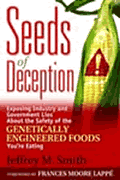Other
Ryter
Articles:
"Men in Black" The Cult of The Judges
NAFTA'S
OPEN DOOR POLICY ALLOWS MAD COW DISEASE
By Jon Christian Ryter
January 16, 2004
NewsWithViews.com
Americans received an the early Christmas present on December 23 when theDepartment of Agriculture reported that it had isolated and positively identified the origin of the nation's first case of bovine spongiform encephatalopathy (Mad Cow Disease). The cow, a Holstein, was part of the herd belonging to a Washington State cattle rancher that was found to have contracted the crippling bovine disease.
When the news broke around the first of December, 2001 that a cow in the United States had Mad Cow Disease, panic set in with America's trading partners who suddenly balked at accepting beef orders they had previously placed to with America's cattle ranchers. Fully dressed sides of American beef hung unsold in meat lockers on both sides of the ocean.
While the cattle "experts" were blaming the feed, the Washington State cattle rancher who owned the infected cow told to the USDA that he purchased some of his cattle from a dairy farm in Alberta, Canada. The Canadian government denied the link.
Scrambling to prevent the growing beef scare from destroying the American beef market, the USDA did a DNA test on the infected cow which its owner insisted came from the Canadian dairy farm. The USDA's chief veterinarian announced on Tuesday, Dec. 6, 2003 that the tests proved conclusively that that [a] the infected cow originated from the Alberta dairy farm, and [b] that America's cattle ranches are free of Mad Cow Disease.
The American people--particularly those who dine at America's famous culinary establishments like McDonald's, Burger King, Jack-in-the-Box and Wendy's--are both pleased and relieved to know that their artery-clogging cuisine is free of the brain-wasting disease, but that does not answer the question of how infected cattle got into the United States in the first place.
Actually, we know how it happened.
A Washington State farmer did, indeed, buy a cow infected with Mad Cow Disease from a dairy farm in Canada and transported it from Canada to his own farm in the United States. That's where the problem comes in.
Where was the USDA when all of this was going on?
Twenty years ago the USDA would have inspected the cattle and tested each cow or bull before they would be allowed into the United States from either Canada or Mexico. NAFTA changed all that. Most Americans now view NAFTA as simply a job-draining mechanism that allows American industrialists to move their factories into the emerging nations, hire slave labor, avoid union entanglements and keep from paying hefty medical and retirement costs as they return the foreign-made, American-branded good back to the United States without paying any tariffs on them where they can then reap a horrendous profit at the expense of the American wage earner. In point of fact, NAFTA is more than that. NAFTA has proven to be a swinging door that not only allows jobs to escape the United States and the products created by those jobs to return, tariff-free, as American branded goods, it also allows farmers in Canada and Mexico to send substandard farm products into the United States without any scrutiny at the border from the USDA which, in past years, would have prevented sick animals or blighted produce from entering the food stream of the United States by denying it access to our markets. NAFTA changed all that.
Today the USDA scrutiny at the borders is all but gone. Had the USDA done its job correctly, the Holstein purchased by the Washington State dairy farmer would have been rejected at the US-Canadian border and the Mad Cow scare that has affected the American beef industry nationwide and cost American cattle ranchers billions of dollars in sales would not have happened.
But the real tragedy is that sick and diseased cattle (known as "downed animals" that can barely stand) are trucked across the Mexican border on a regular basis to slaughterhouses in the American southwest. According to Farm Sanctuary Org, the USDA have turned a blind eye to the slaughter and processing of downed animals as food. The USDA has acknowledged that the possibility exists that downed animals afflicted with Mad Cow Disease could pass USDA inspection and enter the U.S. food supply.

"Perhaps," suggests Gene Bauston, head of FarmSanctuary.org, "the reason we have failed to find mad cow disease in the United States is that we have been quite literally eating the evidence. We have been eating meat from animals contaminated with fecal bacteria and numerous other diseases. According to USDA records, the agency has approved downed animals with hepatitis, malignant lymphoma, enteritis, pneumonia, and gangrene, among other ailments, for human food. Downed animals commonly suffer for hours or days without receiving food, water or veterinary care, and, in many cases, they die of neglect."
Praise the Lord and pass the burgers.
Aren't you glad we have a free
enterprise system that does not broach interference from government
bureaucrats?
Jon Christian Ryter is the pseudonym of a former newspaper reporter with the Parkersburg, WV Sentinel. He authored a syndicated newspaper column, Answers From The Bible, from the mid-1970s until 1985. Answers From The Bible was read weekly in many suburban markets in the United States.
Today, Jon is an advertising executive with
the Washington Times. His website, www.jonchristianryter.com
has helped him establish a network of mid-to senior-level Washington insiders
who now provide him with a steady stream of material for use both in his
books and in the investigative reports that are found on his website.
E-Mail: baffauthor@aol.com
"Perhaps," suggests Gene Bauston, head of FarmSanctuary.org, "the reason we have failed to find mad cow disease in the United States is that we have been quite literally eating the evidence. We have been eating meat from animals contaminated with fecal bacteria and numerous other diseases."







